For many bird keepers, there is always the debate between a bag of pre-mixed seed aimed at a specific group of birds and the various individual seeds that can be bought to mix your own. For many of us, including myself, ease of supplies tends to win out – I can buy a bag of foreign finch in my local pet shop but have to travel a lot further to get to a supplier of individual seeds.
But what actually goes into a bag of seed mix? And if we want to add to it, what are the best seeds for our birds?
Standard mixes
The mixes I’m using here as an example come from the Johnson and Jeff range – this is the one I’m currently using because my local store stocks it (and it is a good product).
Firstly, there’s my finch basic – Foreign Finch. This contains panicum millet, white millet seed, canary seed and vegetable oil. Their mixture is 50% panicum millet that is a small seed, which small birds can easily eat.
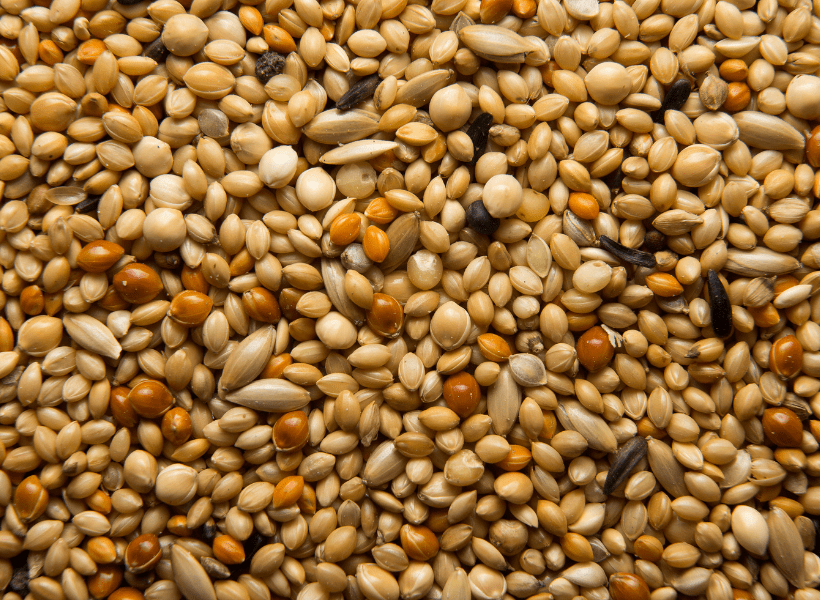
They also have an ABZ Finch Mix which contains canary seed, white millet, Japanese millet, Niger seed, panicum, red millet seed and red panicum, so a wider range of seeds. It is recommended for Australian waxbills as well as other Aussie finches such as the Zebra finch.
British Finch is a mixture aimed at British birds such as the Greenfinch and Goldfinch. It contains canary seed, rapeseed, Niger seed, wild seeds, linseed, naked oats, hemp and Japanese millet. The addition of a range of oilseed increases the vitamin and mineral content as well as omega 3 fatty acids while the wild seeds also contain around 30 different trace elements.
The Aviary Mix is a general mix for everything from budgerigars and canaries to finches and parakeets. It contains canary seed, rapeseed, linseed, Niger seed, white millet, pancium, red millet, naked oats, paddy rice, safflower seed and small striped sunflowers.
There are also mixes such as budgie seeds which come in various varieties. A basic budgie seed mix will contain something like yellow millet, plain canary seed, red millet and vegetable oil. These will be okay for some finches as an alternative but they generally like a little bit more variety.
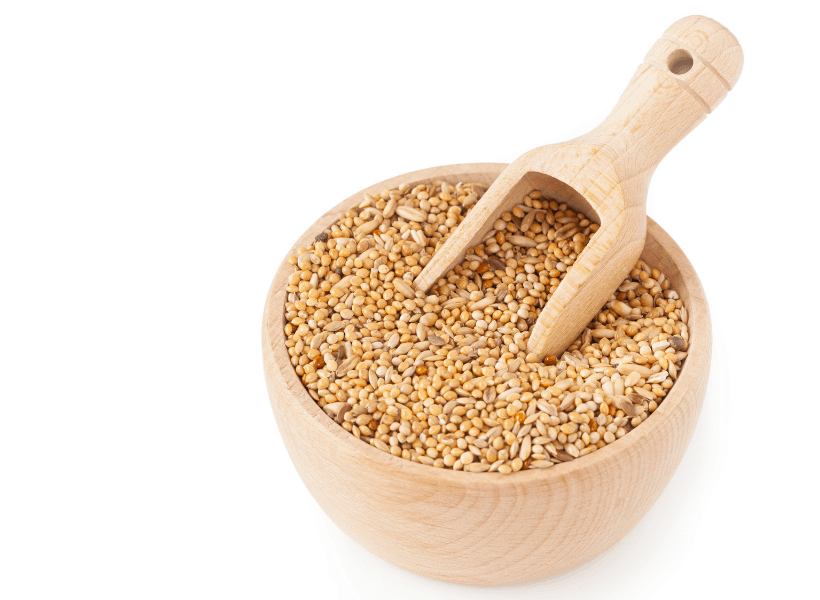
Canary seeds
There are a number of different mixes for canaries, each with a different mixture of ingredients starting with the Standard mixture containing 30% canary seed and 70% white and yellow millet.
The Expert mixture contains 50% canary seed along with white, red and pancium millet as well as vegetable oil. The championship mixture is 60% canary seed to provide a higher protein level.
The super mixture comes from the US breeders and features a straight 50% canary seed and white millet with vegetable oil.
Finally, they also have their Type 44 mixture for canaries to be used around breeding time that includes Japanese millet, rapeseed, whole linseed, hemp, mawseed, Niger, perilla, sesame and aniseed oil.
What’s in a seed?
But what do all these seeds provide to our birds? And when is a good time to feed certain seeds? Are there such as thing as unhealthy seeds?
Let’s start at the top with pancium millet, also known as proso millet or its Latin name Pancium miliaceum. Most often, this small, yellow seed is easy to digest and is filled with vitamins and minerals. Each seed contains 6.5% fibre, 11.6% protein and 3.5% fat.
White millet is in fact the white version of this same seed and is sometimes referred to as French white millet.
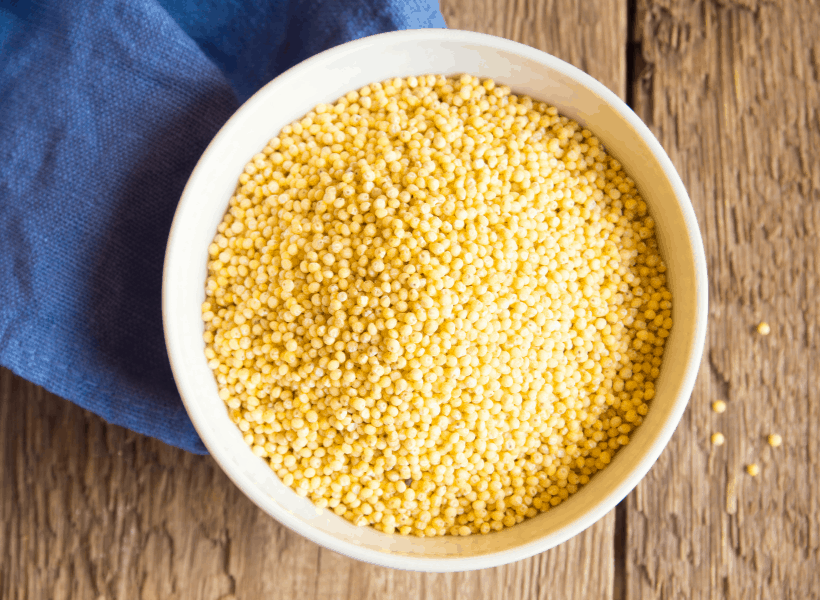
Red millet is a third variety of the same seed though is slightly larger in size and can be harder for smaller birds to remove the hulls. It is however suitable to use as sprouting seed and is then easier for them to de-hull.
Japanese millet are also known as Barnyard mille (Echinochloa frumentacae) and are small, oddly triangular shaped seeds that are little similar to buckwheat. They are soft in texture and are easily eaten, making them a favourite of even the smallest species.
Millet sprays are different seeds, coming from a plant called the Foxtail millet of Setaria italic and are typically given to birds on the stalk. They are a great favourite of all birds – mine do their best impressive of a hoard of locust when the millet spray comes out.
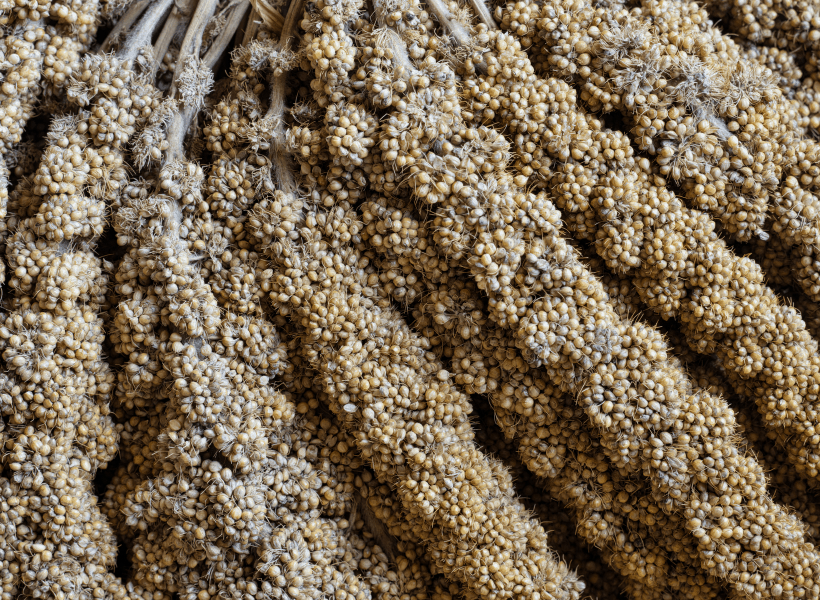
Canary seed is at the heart of most mixture and comes from the plant Phalaris canariensis. The seeds are around 3mm in length with light brown hulls and darker seeds inside. Birds can easily de-hull them so they are popular with all species, especially those feeding chicks. However, they aren’t the most nutritional seeds so a canary seed only diet is a bad idea.
| Moisture | Protein | Fat | Fibre | Calcium | Phosphorus | |
| Pancium millet | 9.2 | 13.1 | 3.3 | 9.1 | 0.03 | 0.4 |
| Millet spray | 12.5 | 15 | 6.1 | 11.2 | 0.03 | 0.32 |
| Canary seed | 15.1 | 13.7 | 4.1 | 21.3 | 0.05 | 0.55 |
| Niger seed | 7 | 20 | 43.2 | 14.3 | 0.43 | 0.65 |
| Flax seed | 7.1 | 24.2 | 37 | 6.3 | 0.23 | 0.66 |
| Sunflower seed | 7.1 | 15.2 | 28.3 | 29.1 | 0.18 | 0..45 |
| Safflower | 7.2 | 14.3 | 28 | 31.2 | – | – |
This table shows a comparison in percentages to some of the main seeds discussed here and a few of the main elements they contain.
Other seeds
Niger seed is a very popular seed with many birds (my Siskin in particular is an addict who has to given it in smaller amounts!). Also known as Nyjer seed, it is an oilseed because it has more than 35% fat in its content. The plant that produces these seeds is the African yellow daisy (Guizotia abyssinica) that comes from Ethiopia and parts of Africa. As well as fat, they do contain 18% protein so are healthy in balance but experts recommend no more than 5% of a bird’s diet should be Niger seeds.
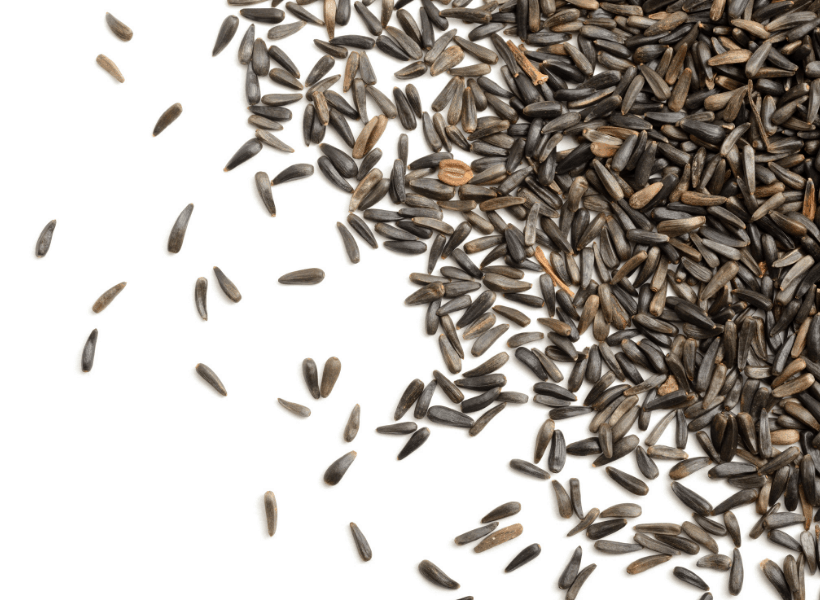
Hemp is the seed of choice for many medium birds such as parakeets and cockatiels but smaller birds can also manage to hull it in some cases – watch the food bowl to see if they eat it to see if it is worth continuing with. Again, it is an oilseed and is great for providing energy but can be fattening if too much eaten, particularly for caged birds.
Flax is another oilseed that can provide good nutrients to birds as long as not too much is given. It is also best to only buy them in small quantities as they can become rancid quite quickly, while they are not suitable for soaked seed purposes as a slimy coating develops that is unhealthy and tastes horrible.
Rapeseed is the seed of a plant that most of us will be familiar with and some with allergies will hate – it is also known as rape and oilseed rape (Brassica napus). The seeds are used to make rapeseed oil and canola oil, depending on the exact plant. It is popular with wild birds and can work as a conditioner for birds in captivity.
Linseed is a small brown seed that has lots of good essential oils in it including omega 3 fatty acids, dietary fibre and vitamin B but also in fat and energy. Like the other oilseeds, it shouldn’t make up a large percentage of the bird’s diet to avoid obesity as it contains around 40% oil. It does contain natural anti-inflammatory properties that means for older birds it can help with conditions such as arthritis.
Sunflower seeds are one of the most familiar of the bigger seeds and are eaten by many people. Those with the striped outer seed are generally thicker than those with plain black outers with larger birds getting through this in no time at all. They are a good source of protein, dietary fibre and carbohydrates as well as a host of other trace elements. They do contain a higher level of oil and fibre so are a supplement seed.
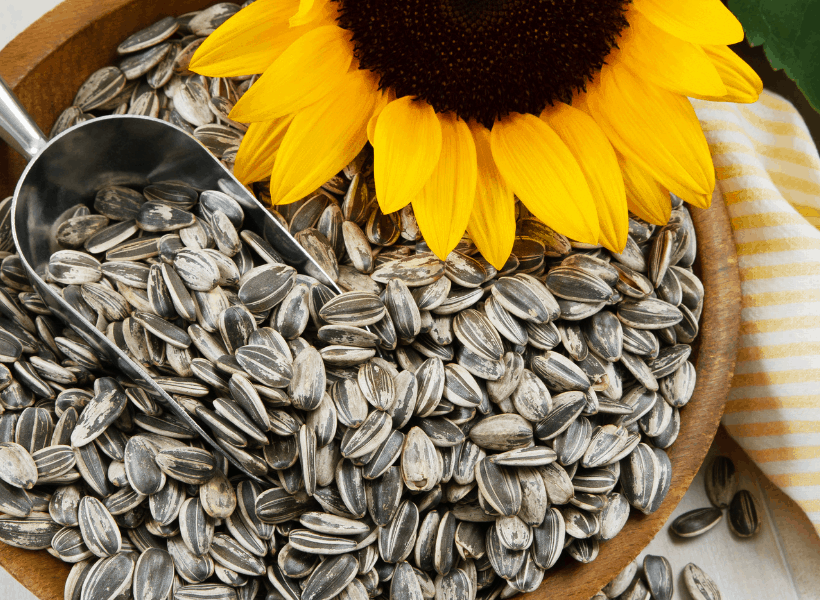
Safflower isn’t known as well in the UK as in the US but it is very high in energy, protein and unsaturated fats. It is one of the oldest oilseed crops and is a pale cream colour. It can also be soaked and served to birds sprouted with an increased nutritional value.
In the numbers
So in summary, it seems that the mixes available do contain a good range of the basic seeds for our birds then oilseeds such as Niger and sunflower can be added to give them a boost and for the enjoyment as well. The only element that doesn’t take into account is whether or not the birds will actually like the seeds!